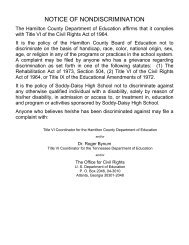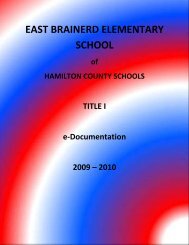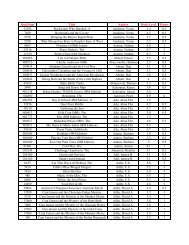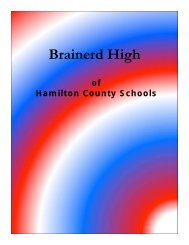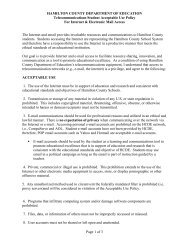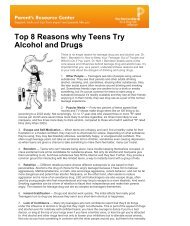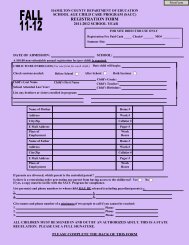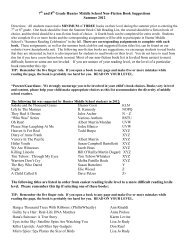RESOURCE PACKET Assessment of Language Impairment
RESOURCE PACKET Assessment of Language Impairment
RESOURCE PACKET Assessment of Language Impairment
You also want an ePaper? Increase the reach of your titles
YUMPU automatically turns print PDFs into web optimized ePapers that Google loves.
Examiners should not generalize from instruments that measure only vocabulary, which is<br />
merely one aspect <strong>of</strong> the linguistic and cognitive domains. No child should be considered<br />
speech-language impaired solely on the basis <strong>of</strong> standardized test results. Standardized tests<br />
tend to examine discrete skills in a decontextualized manner (i.e., away from natural<br />
communicative environments). Furthermore, not all children are suitable candidates for<br />
standardized tests.<br />
Descriptive measures <strong>of</strong> functional or adaptive communication <strong>of</strong>ten provide a more realistic<br />
picture <strong>of</strong> how a student uses his/her communication knowledge and abilities in everyday<br />
situations and the impact <strong>of</strong> a language impairment in those settings. Examples <strong>of</strong> descriptive<br />
measures are:<br />
• language/communication samples,<br />
• observations,<br />
• interviews,<br />
• play-based assessment,<br />
• transdisciplinary assessment,<br />
• curriculum-based assessment, and<br />
• criterion-referenced tests.<br />
For some student populations, such as children with severe disabilities or children whose<br />
English pr<strong>of</strong>iciency is limited, the provision <strong>of</strong> unbiased assessments can only be made with<br />
descriptive measures. There are Teacher Input - Functional Communication and Functional<br />
Communication Rating Scale forms that may be useful when assessing the communication<br />
skills <strong>of</strong> students who have disabilities such as Autism, Developmental Delay, Mental<br />
Retardation/Functional Delay, and Multiple Disabilities for whom the diagnosis <strong>of</strong> <strong>Language</strong><br />
<strong>Impairment</strong> may not be appropriate. The Published Standardized Instruments matrices include<br />
lists <strong>of</strong> test instruments that can be used for the assessment <strong>of</strong> language and includes additional<br />
information (age range, administration time, description, test publishers, and purpose) for each<br />
test.<br />
CONDUCTING A LANGUAGE EVALUATION<br />
• Conduct hearing and vision screenings.<br />
• Obtain relevant information from the parents: concerns about communication skills,<br />
developmental history, etc.<br />
• Information must be gathered from two educators – the student’s classroom teacher as well<br />
as another pr<strong>of</strong>essional. For preschoolers, obtain this information from childcare providers<br />
or other adults who see the child outside <strong>of</strong> the family structure.<br />
• Obtain information from teachers related to progress in the general curriculum,<br />
communication skills, behavior and social interactions. General curriculum for preschoolers<br />
is developmentally appropriate activities.<br />
• Review school records, e.g. grades, test scores, special education files, documentation <strong>of</strong><br />
prereferral strategies/interventions, and discipline and attendance records.<br />
• Select and administer at least one comprehensive norm-referenced test that is appropriate<br />
for the student’s age and yields receptive, expressive, and total language quotients<br />
whenever possible.<br />
ED –4072 / Rev. 07.09<br />
Department <strong>of</strong> Education<br />
<strong>Language</strong> <strong>Impairment</strong> Resource Packet




